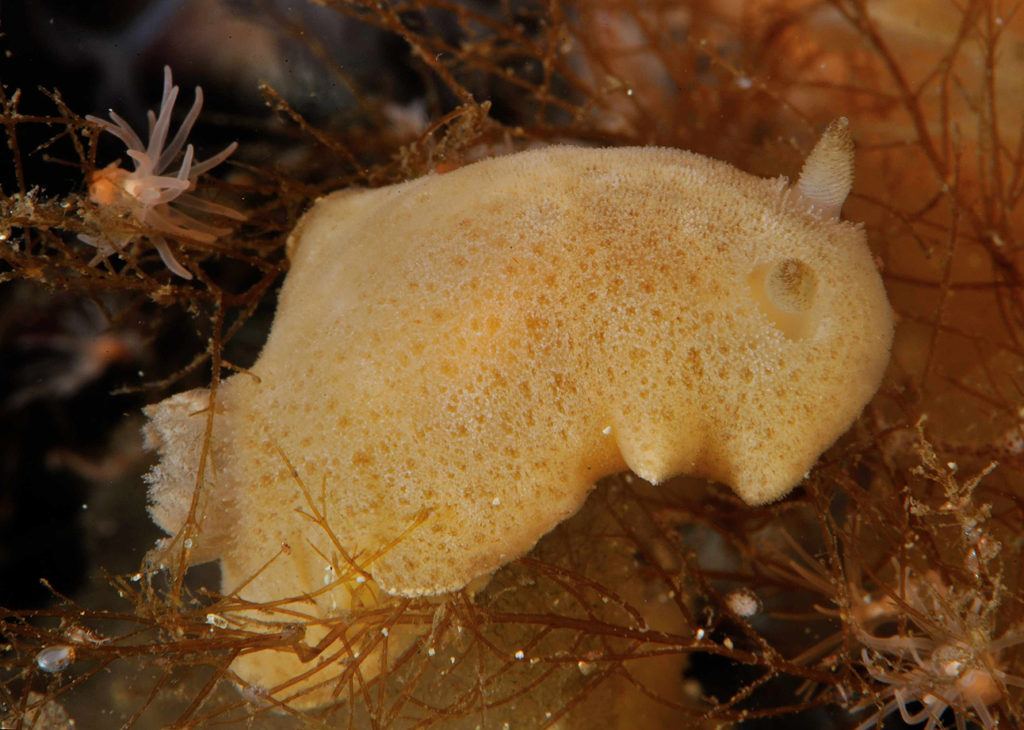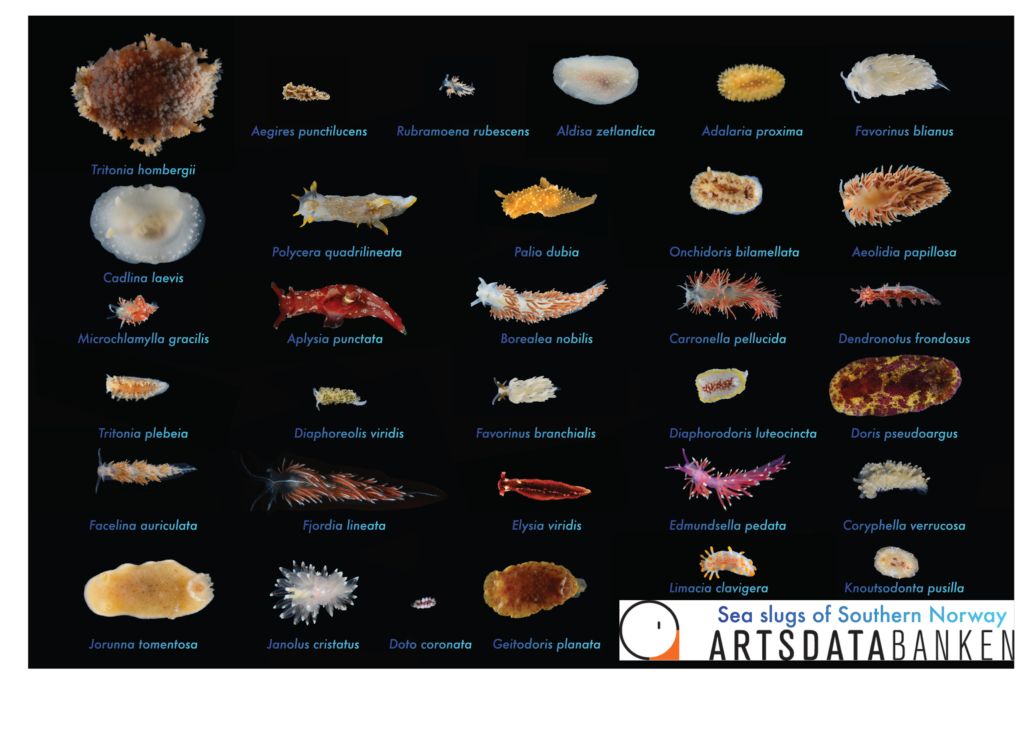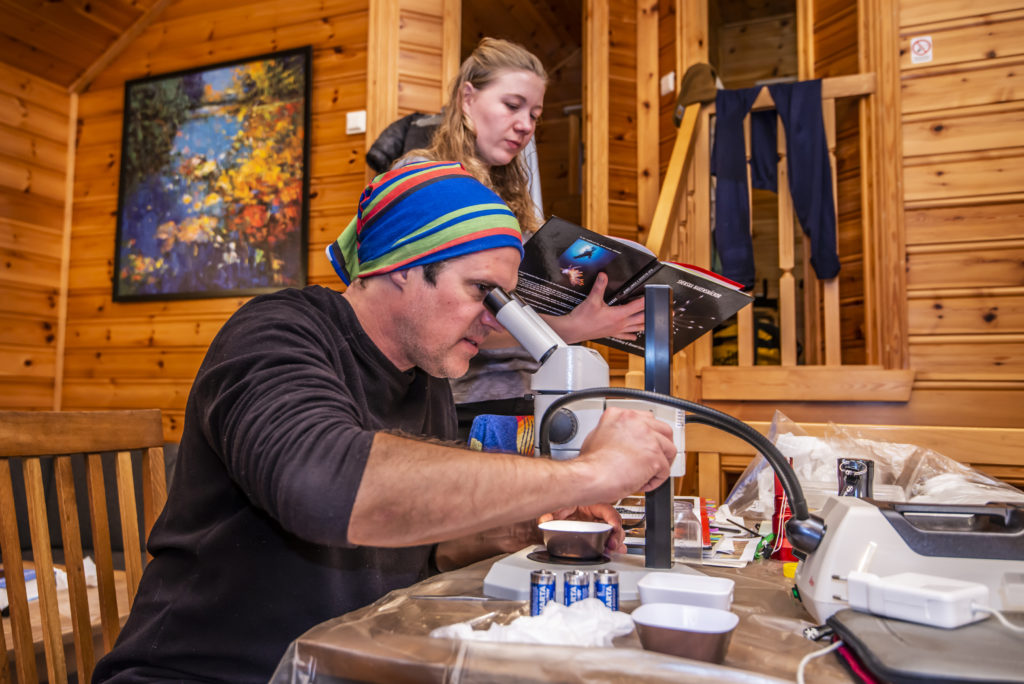I’m always scared to look at the current date, time flies! It was already two months ago that we went on a blitz fieldwork trip to Egersund with a very special group of people. But nevertheless, good times become good memories (and especially good museum specimens) and it definitely does not get too old for a small blog about it.
From January 17 to January 21 a small group of sea slug enthusiasts consisting of a student, citizen scientists, a collaborator and museum members rented a van and drove 7 hours down to our Southern neighbor town Egersund.
Egersund was not randomly picked as it is the home town to one of Norway’s most productive and dedicated ‘citizen scientist’; Erling Svensen. Author of a number of books and the most well-known and worldwide used ‘Dyreliv I havet – nordeuropeisk marin fauna’ (English Marine fish and invertebrates of Northern Europe), which amateurs and professionals alike use as an extensive research source.
With his almost 5000 dives and counting, Erling knows the critters of the North Sea, big and small, on the back of his hand. Already since the beginning of the sea slug project, Erling was helping providing valuable sea slug species, so it was about time to pay him a visit and bring our team over to make Egersund “biologically unsafe” – enough so to end up in the local news!
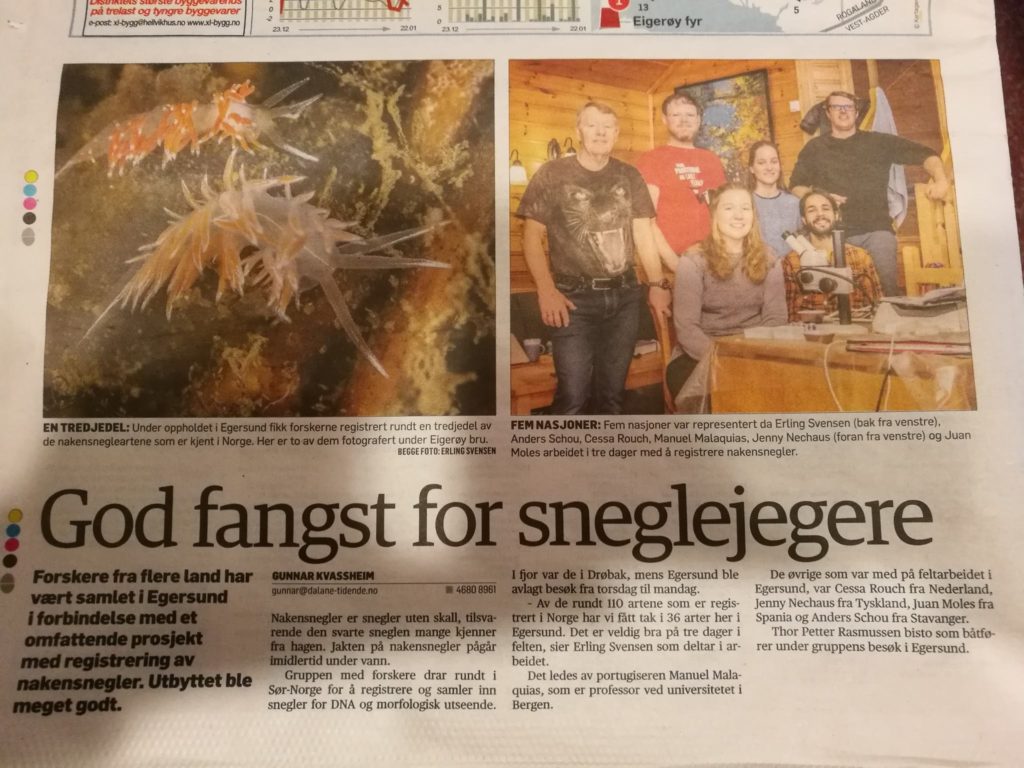
We made Egersund unsafe enough to have a small news item about it in the ‘Dalane Tidende’, a local newspaper
The group consisted of Manuel, Cessa, citizen scientist Anders Schouw, collaborator from Havard University Juan Moles and master student Jenny Neuhaus
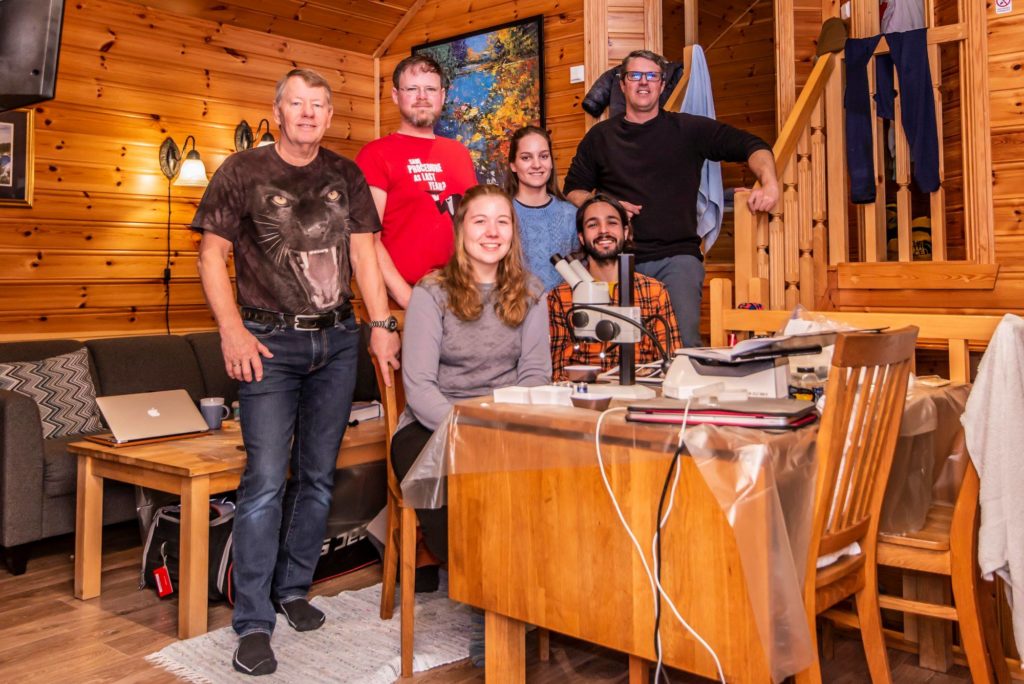
From left to right Erling Svensen, Anders Schouw, Jenny Neuhaus, Cessa Rauch, Juan Moles and Manuel Malaquias. Photo by Erling Svensen
Jenny just started her Masters in Marine Biology at the University of Bergen in the fall of 2018, she will be writing her thesis on the diversity of sea slugs from the Hordaland county and on the systematics of the genus Jorunna (Nudibranchia) in Europe. The results of this work will definitely become a blog entry of its own.
Two of the five days of our fieldwork were basically spendt driving up and down from Bergen to Egersund, it left us only with a good 3 days to get an overview of Erling’s backyard sea slug species. Little time as you can imagine. But time was used efficiently, as Anders and Erling are both extremely good sea slug spotters and with help of sea slug specialist Juan and the eager helping hand of Jenny, Manuel and I were able to identify and add 36 species to our museum sea slug database.
In comparison, we registered 41 one species in Drøbak last year by spending almost a week at the field station! No one thought this would be the outcome (not even Erling himself, as he mentioned that he didn’t find that many sea slug species this time of year on earlier surveys). But we were all very happily surprised, and maybe it was not just luck but also the combination of people we had attending this short field trip. With so many good specialists, either professional or amateur, senior or junior, we were able to work extremely efficient and with a clear communal goal. There was little time spend in reinventing the wheel and explaining the work flow, it was a good valuable exercise that will definitely help us with future brief fieldwork trips and how to make the most from short and tight time schedules. Besides it was a very valuable experience for our student Jenny, as she got first-hand experience with what it’s like to see her study specimens alive, how to handle these fragile individuals, how to sort them from other species and how to document them, which is a good thing to know for her thesis and future career
So yes, all in all our Egersund fieldtrip was short but very sweet!
Furthermore
You want to see more beautiful pictures of sea slugs of Norway! Check out the Sea slugs of Southern Norway Instagram account; and don’t forget to follow us. Become a member of the sea slugs of southern Norway Facebook group, stay updated and join the discussion.
Explore the world, read the invertebrate blogs!
-Cessa & Jenny


